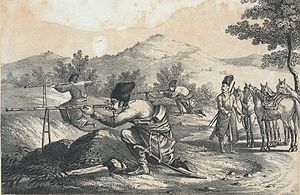Battle_of_Khwar_Pass
The Battle of Khwar Pass was a failed ambush set up by Ashraf Hotaki during his retreat in the aftermath of his defeat at the Battle of Damghan (1729). Gathering what forces lay on his route, Ashraf pulled together another formidable fighting force around the remains of his badly bloodied force, even having enough men to spare for an ambush set up at a narrow pass east of Varamin.
This article includes a list of references, related reading, or external links, but its sources remain unclear because it lacks inline citations. (August 2021) |
This article needs additional citations for verification. (August 2021) |
